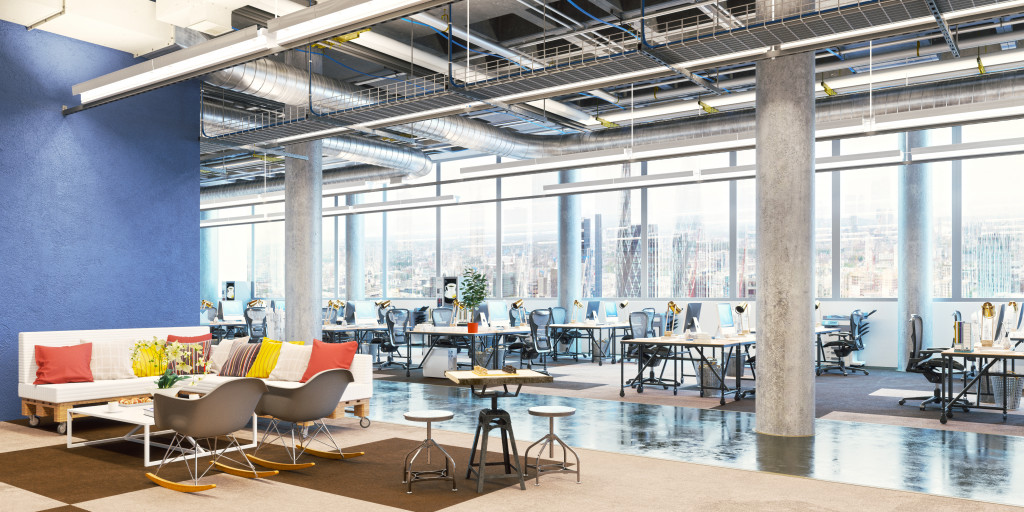If you plan to build a new commercial space, move to another building, or renovate your existing office, one of the first things you need to consider is a good office layout. When you consult a commercial architect to ensure a good workspace model, make sure your facility encourages purposeful work. One way to do this is to adopt a flexible office design.
An adaptable workplace arrangement encourages a highly collaborative space through minimal disruptions and enhanced visibility. It can initiate new ways of working that can spark your employees’ creative flair and improve efficiency in the organization.
The Important Elements of a Flexible Workspace
A flexible workspace features a space-efficient design that allows everyone to be mobile to best support their tasks. Here are some important workspace elements that promote collaboration and versatility:
Adaptable Environment
Flexible office spaces usually feature non-traditional workstations like standing desks, large bean bags, and reception areas that create an inviting space. These multipurpose elements build the foundation for a flexible work environment that encourages productivity and makes everyone comfortable. Here are some ideas for incorporating adaptable furniture in your office:
- Add Desk Pods: Desk pods are portable units that allow open collaboration while keeping distractions at a minimum. They can feature privacy screens for partial isolation and can also be connected into pod groups for meetings.
- Consider Modular Soft Seating: Easy-to-move modular sofas, lounge chairs, and ottomans are great for comfortable seating during team meetings. Your team can also move them around to enjoy their break time with their teammates.
- Use Collaborative Breakout Furniture: Breakout furniture can be effectively used to maximize small spaces and allow employees to relax and socialize. Adding this to your workspace will not only enhance its aesthetics but also re-energize your employees so that they come back to work refreshed and motivated.
Open-plan Designs
Open-plan offices allow free-flowing collaboration and accommodate larger teams as there are no physical barriers present. They also promote team spirit and productivity as opposed to closed spaces.
Quiet Areas
An open office design can result in a noisy environment, but this can be mitigated by creating dedicated quiet spaces like soundproof office cubes so employees can focus on their tasks. You can also invest in sound-friendly furniture and flooring to create a more productive work environment. Here are other tips for creating quiet spaces in the office:
- Provide Enclosed Rooms: Add several walled-in spaces to give your employees a place to make phone calls or one-on-one meetings. You can use glass doors to maintain visibility and privacy.
- Add Some Dividers: Use movable whiteboards, curtains, or screens to give employees some alone time. These temporary “walls” can establish privacy without permanently removing the opportunity to collaborate freely.
- Add Plants: Aside from adding beauty to the office, plants are great sound barriers. Add just enough indoor plants to absorb excessive noise and improve indoor air quality without affecting your office design layout.
The Benefits of a Flexible Workspace

Reduced Costs
Flexible workspaces reduce general office expenses like office furniture, construction, and other utilities. For instance, standing desks can be cheaper compared to setting up cubicles for each employee. Fewer walls also mean a lower cost of materials and less time to create the office. You can fit more people in an open office plan, which will generate more savings for your business.
Improved Work Culture
Fewer physical barriers mean more opportunities for everyone to intermingle and collaborate regardless of their position. This open interaction makes the workplace more pleasant, making employees feel more relaxed and happy as opposed to working in isolation. When there’s free-flowing communication, employees will be happier, fulfilled, and productive.
Better Employee Retention
The more satisfied your employees are with the workspace design, the less chance of them finding work elsewhere. They are more likely to remain with their current company if they don’t suffer from stress often, which is one of the main causes of their absences and resignation.
You’ll be able to attract and retain talent if you offer more flexibility for them. Freedom in work conditions may convince a highly talented workforce to stay. Employees commonly seek offices with open office areas to maximize communication, lounge areas for relaxation, multi-department interaction, and private spaces for meetings.
A flexible office design can make your business and employees thrive. When they are motivated, a higher level of productivity and creativity boosts their morale and benefits your branding. Maintain a flexible workspace model to let your employees collaborate freely, learn more and perform better.
